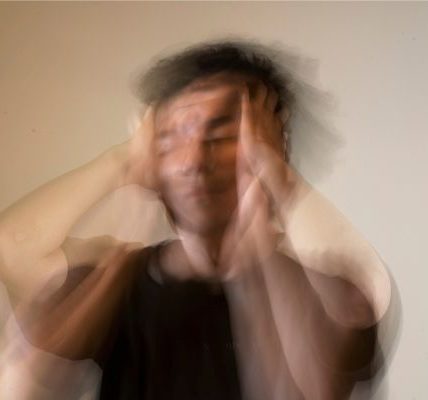Setting up a security system isn’t just about placing a few cameras and hoping for the best. It’s about making smart choices that protect what matters most, your home, business, or property. Whether you’re installing a new system or upgrading an existing one, following a few key practices can make all the difference. From camera placement and network setup to mobile access and backup options, every detail plays a role in your system’s effectiveness.

In this blog, we’ll walk you through the 7 best practices to help you set up a security system that’s reliable, efficient, and built to keep you safe.
1. Conducting a Thorough Security Assessment
Before purchasing any equipment or installing a single camera, you need to understand exactly what you’re protecting and the specific threats you face. A comprehensive security assessment creates the foundation for your entire protection strategy.
Identifying Your Unique Vulnerability Points
Every property has its own security fingerprint, a unique set of characteristics that create both strengths and weaknesses. Start by walking your property and identifying all potential entry points,including windows, doors, and less obvious access points like basement entries or second-floor balconies. Make note of areas containing high-value assets that would be particularly attractive to thieves.
For optimal protection, consider investing in home security surveillance cameras that provide coverage of these critical areas. These specialized cameras offer features specifically designed for residential monitoring, including night vision capabilities and motion-activated recording to capture any suspicious activity around your property.
Risk-Based Security Planning
Once you’ve mapped your vulnerability points, it’s time to prioritize them based on both likelihood and potential impact. Not all risks are created equal, a rarely-used side door may represent less risk than your main entrance, but a vulnerable window near valuable electronics presents a high-risk combination.
Create a customized security blueprint that addresses your specific risk profile. This might mean concentrating resources on high-risk areas while implementing more basic measures in lower-risk zones. Remember that different property types require different approaches, securing a home differs significantly from protecting a construction site.
With your assessment complete, you’re ready to move from planning to implementation, beginning with one of the most critical elements: camera placement.
2. Implementing Strategic CCTV Camera Placement
Strategic camera placement transforms your security from passive recording to active protection. The effectiveness of your entire system hinges on how well you position these crucial electronic eyes.
Optimal Positioning of Home Security Surveillance Cameras
Effective coverage mapping starts with identifying key zones that require surveillance. For residential properties, these typically include all entry points, blind spots around the property, and areas where valuables are stored. The CCTV camera for home should be positioned at an angle that captures faces rather than just the tops of heads, typically at a height of 8-9 feet.
Construction sites present unique challenges due to their temporary nature and constant change. For construction site security, cameras should cover equipment storage areas, material stockpiles, and site entrances, with special attention to after-hours monitoring.
Camera Selection for Specific Environments
Not all cameras are created equal. Choosing the right equipment for your specific environment is crucial. For outdoor deployment, weather-resistant cameras with protective housing are essential to withstand rain, snow, and temperature fluctuations.
Low-light environments require cameras with enhanced night vision capabilities, while high-traffic areas benefit from higher resolution options that can capture fine details like facial features or license plates. When implementing remote security monitoring, bandwidth considerations become particularly important to ensure smooth video transmission without network bottlenecks.
With your cameras strategically placed, it’s time to connect these components into a cohesive network that maximizes your security investment.
3. Building an Integrated CCTV System Architecture
Individual cameras provide observation points, but a true CCTV system creates comprehensive protection through thoughtful integration. Let’s examine how to build an architecture that minimizes blind spots and maximizes effectiveness.
Wired vs. Wireless CCTV Camera Systems
The backbone of your CCTV camera system will be either wired or wireless technology, and each offers distinct advantages. Wired systems typically provide more reliable connections with no signal interference but require more extensive installation. Wireless systems offer flexibility and easier installation, but may be vulnerable to interference and bandwidth limitations.
For many properties, a hybrid approach offers the best solution, using wired connections for critical areas where reliability is paramount,and wireless cameras in areas where running cables is impractical or visually disruptive.
Central Monitoring and Management Solutions
The nerve center of your CCTV camera system is the recording and management technology that processes and stores video data. Modern systems typically use either Network Video Recorders (NVRs) or Digital Video Recorders (DVRs), with NVRs generally offering more advanced features for IP camera systems.
Cloud-based storage provides the advantage of off-site backup and remote access, while on-premises solutions offer more control over your data and often lower ongoing costs. When setting up remote security monitoring, ensure your system includes mobile access capabilities to view feeds from anywhere.
With your physical infrastructure in place, the power of modern security comes from being able to monitor and respond from anywhere, anytime.
4. Establishing Remote Monitoring Protocols
The true value of modern security systems lies in their ability to provide visibility and control regardless of your location. Effective remote security monitoring transforms passive recording into active protection.
Setting Up Live Video Monitoring Systems
When configuring your live video monitoring capabilities,you’ll need to choose between continuous recording and motion-triggered monitoring. Continuous monitoring provides complete coverage but requires more storage, while motion-activated systems conserve resources by recording only when activity is detected.

Creating monitoring schedules based on risk assessments can optimize your approach, perhaps using continuous monitoring during high-risk periods and motion detection at other times. For businesses, consider whether you’ll handle monitoring in-house or outsource to a professional service with trained security personnel.
Implementing Intelligent Alert Systems
Modern video monitoring systems can do much more than simply record—they can actively alert you to potential threats. AI-powered motion detection can distinguish between a person approaching your door and a tree branch swaying in the wind, dramatically reducing false alarms.
Establish clear alert prioritization and escalation procedures so that different types of detected events trigger appropriate responses. Configure mobile notifications to reach the right personnel immediately when threats are detected, and consider integration with professional monitoring services for critical situations.
Your remote monitoring capabilities are only as reliable as the system’s resistance to both physical tampering and cyber threats.
5. Hardening Your Security System Against Threats
A security system that’s vulnerable to tampering or hacking creates a false sense of protection. Let’s explore how to fortify your security investment against the very risks it’s designed to combat.
Physical Protection Measures
Your CCTV camera equipment requires physical protection to prevent tampering or damage. Install cameras at heights that make them difficult to reach without special equipment, and use tamper-resistant housings to prevent manipulation. Secure network connections and power supplies in locked cabinets or conduits to prevent disconnection.
For outdoor components, ensure proper environmental protection against extreme weather, including waterproof housings and lightning protection for vulnerable electronics.
Cybersecurity Protocols for Modern CCTV Systems
Today’s CCTV systems are increasingly networked, making cybersecurity an essential consideration. Implement strong encryption for all video transmission to prevent interception. Establish robust password management practices, including unique, complex passwords for all devices and regular password rotation.
Regularly update firmware on all system components to patch security vulnerabilities, and consider implementing network segregation to isolate your security system from other networks, reducing the risk of lateral movement by attackers.
A hardened security system provides protection, but only when properly understood and utilized by those who operate it.
6. Creating Comprehensive Documentation and Training
Even the most sophisticated security system is only as effective as the people who operate it. Proper documentation and training ensure your system performs optimally when it matters most.
System Documentation Best Practices
Create detailed system maps showing the location of all components, including cameras, recording equipment, and network connections. Maintain comprehensive component inventories, including model numbers, serial numbers, and warranty information for easy reference during troubleshooting or replacement.
Develop clear maintenance schedules and procedure documentation to ensure regular system checks and proper upkeep. Create troubleshooting guides for common issues to minimize downtime during technical problems.
User Training and Protocol Development
Define clear access levels and permission management rules to ensure users can only access appropriate system functions. Develop detailed emergency response procedures and escalation paths for different types of security events.
Conduct regular security awareness training for all system users, covering proper operation, alert response, and security best practices. Create and maintain documentation required for regulatory compliance, especially for businesses in regulated industries.
With proper documentation and training in place, your final step is implementing ongoing auditing and maintenance to ensure continued effectiveness.
7. Implementing Regular System Auditing and Maintenance
Security isn’t a one-time implementation but an ongoing process requiring regular attention. Systematic auditing and maintenance ensure your home security camera system evolves alongside changing threats and technologies.
Performance Monitoring and Optimization
Track bandwidth usage and storage requirements to ensure your system operates efficiently without bottlenecks. Regularly adjust camera angles and focus settings to account for seasonal changes like vegetation growth or changing light conditions.
Implement regular video quality assessments to ensure cameras are capturing usable footage, addressing issues like dirt on lenses or degraded night vision capabilities before they compromise security.
Security System Evolution Planning
Technology rapidly evolves, so develop clear upgrade paths that maintain compatibility between components while leveraging new capabilities. Create scaling strategies for expanding security needs as your property or business grows.
Explore opportunities for integration with emerging security technologies like AI-powered analytics or automated response systems. Establish a consistent budget for regular maintenance and planned upgrades to prevent system degradation over time.
Regular system auditing completes the cycle of security implementation, revealing both the strengths and opportunities for enhancement in your protection strategy.
Beyond Implementation: Maximizing Your Security Investment
Following these seven best practices builds a strong security foundation that offers real protection, not just the appearance of it. A well-designed CCTV camera system adds value through effective monitoring, not just recording. The best setups strike a balance between safety, simplicity, and cost. If a system is too complex to use, it often gets ignored. And as technology evolves, so should your system. Think of security as an ongoing process, not a one-time setup, to stay truly protected.
FAQs on Setting a Security System
1. What Are the Three Security Measures That Should Be Guaranteed in Every Secure System?
Confidentiality, Integrity, and Availability, often referred to as the CIA triad (has nothing to do with the Central Intelligence Agency!), are basic but foundational principles to maintaining robust security in a given environment.
2. Do Burglars Avoid Homes With Security Systems?
Do security systems deter burglars? Security systems deter burglars.Yes, security systems deter burglars. In a survey of over 400 convicted burglars from the University of North Carolina, 80 percent of burglars said they would check for alarm systems before break-ins. If they found a system, 60 percent of burglars would choose another home.
3. What Is the Most Important Step Before Activating the Security System?
Securely lock all exterior doors, including sliding/swinging patio doors. All deadbolt devices should be engaged, as well as any folding/locking horizontal security bars or non-key locking pins. All windows must be closed and locked to ensure that all contacts are properly aligned.




